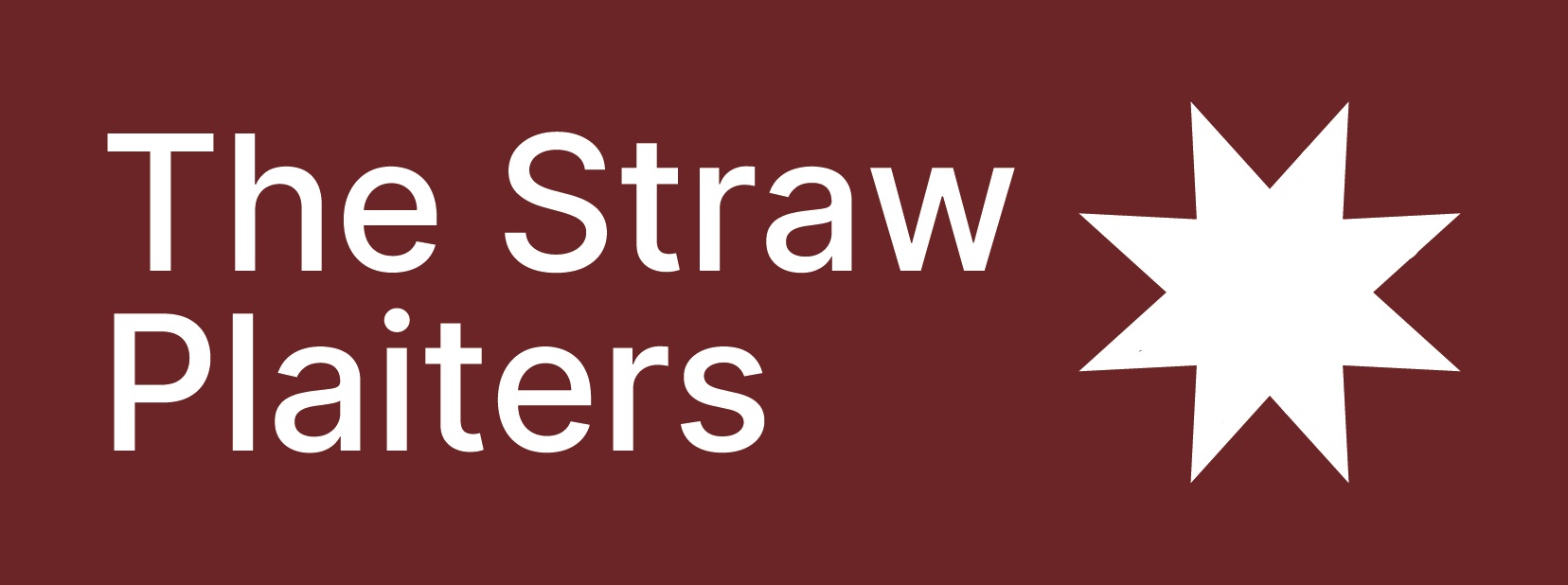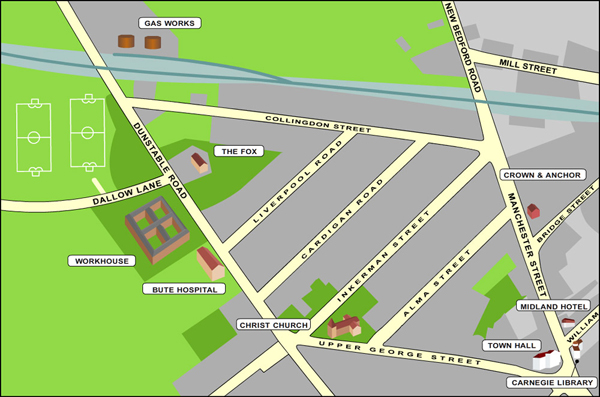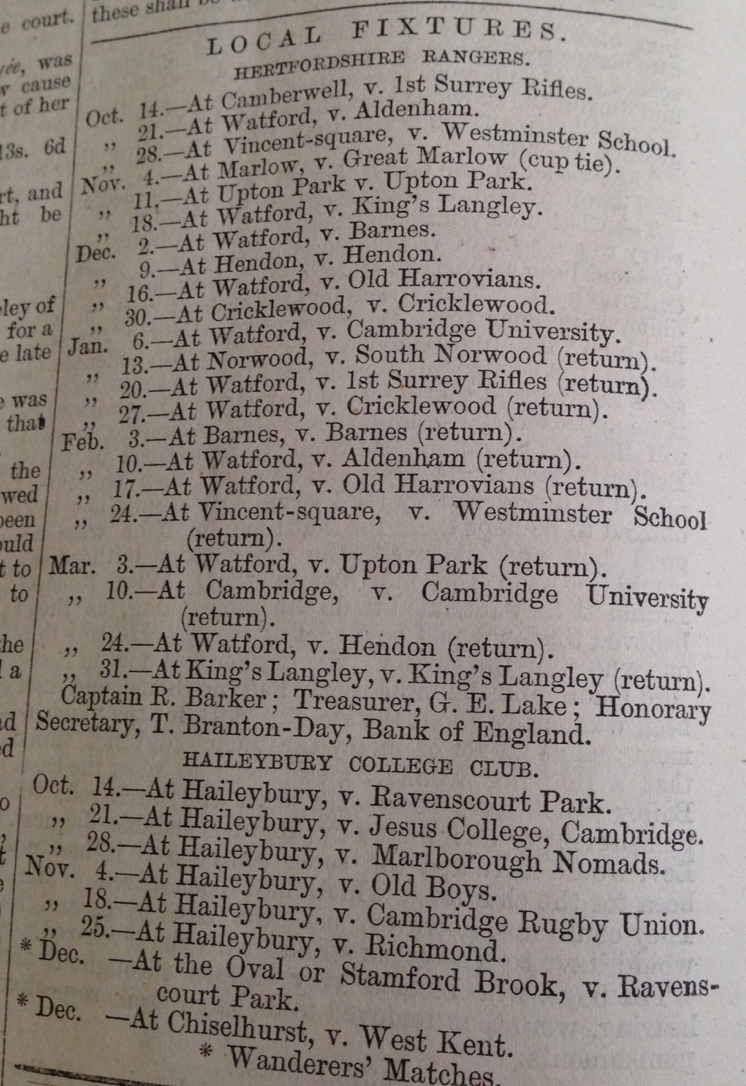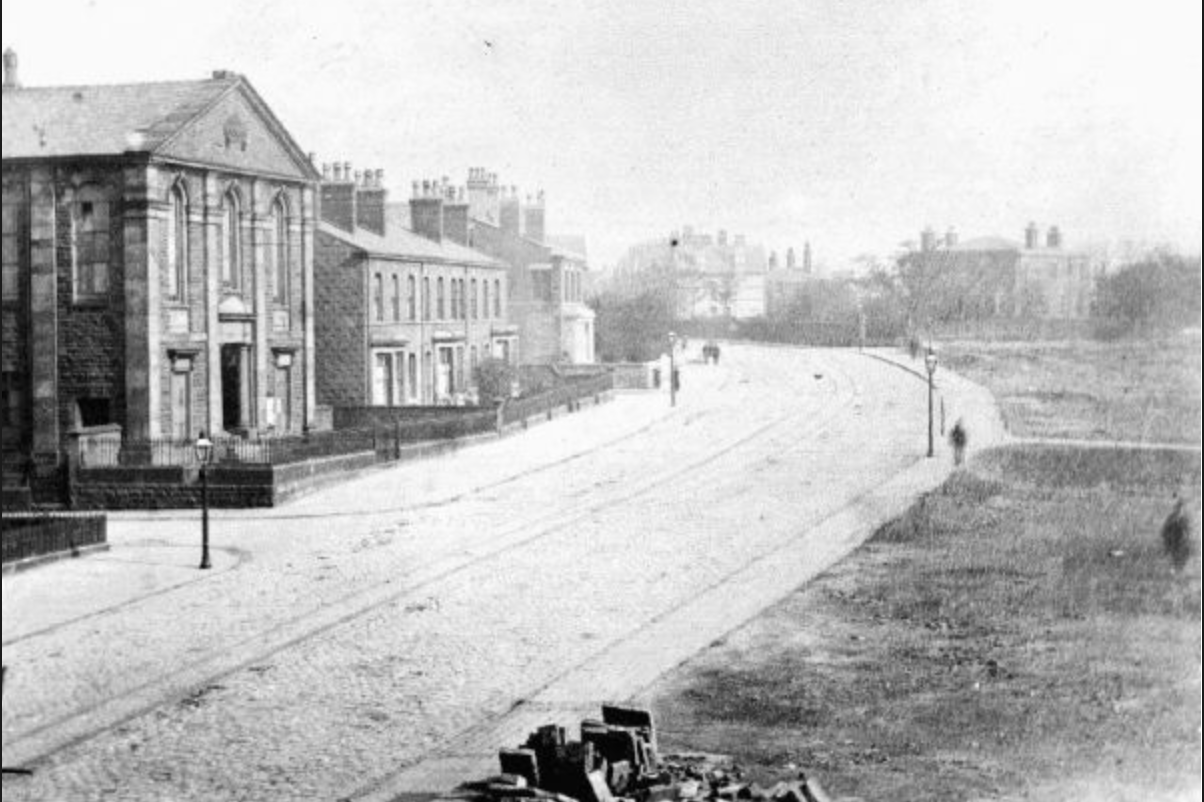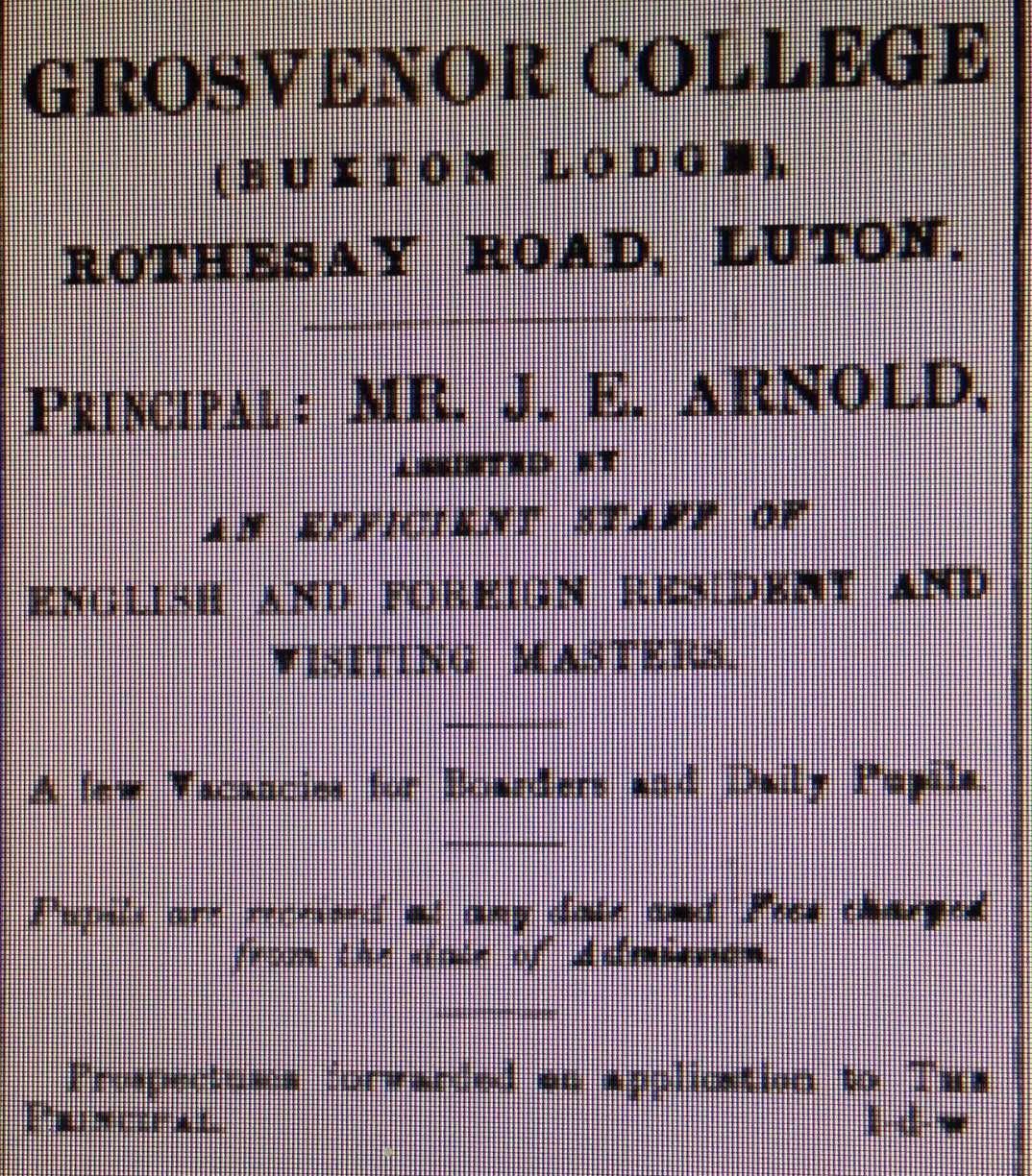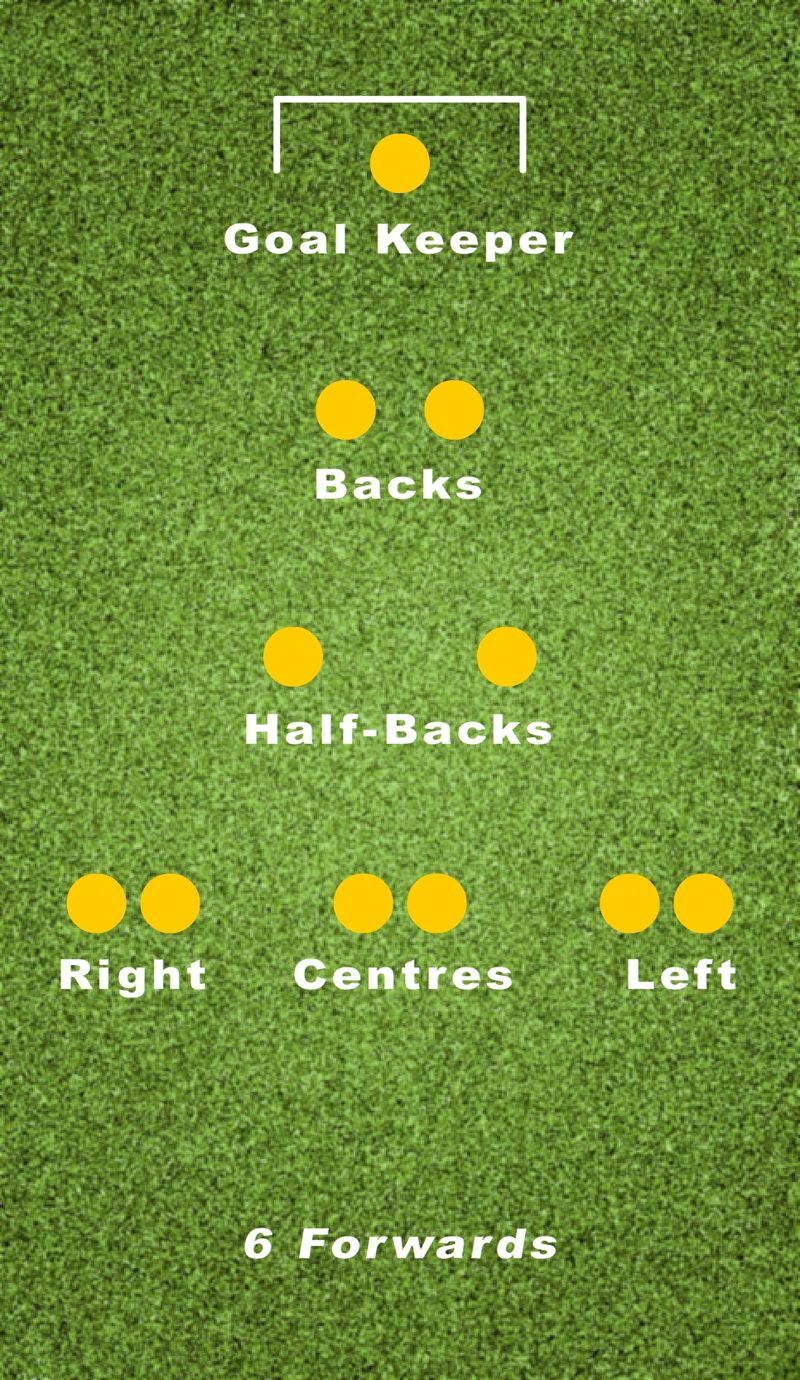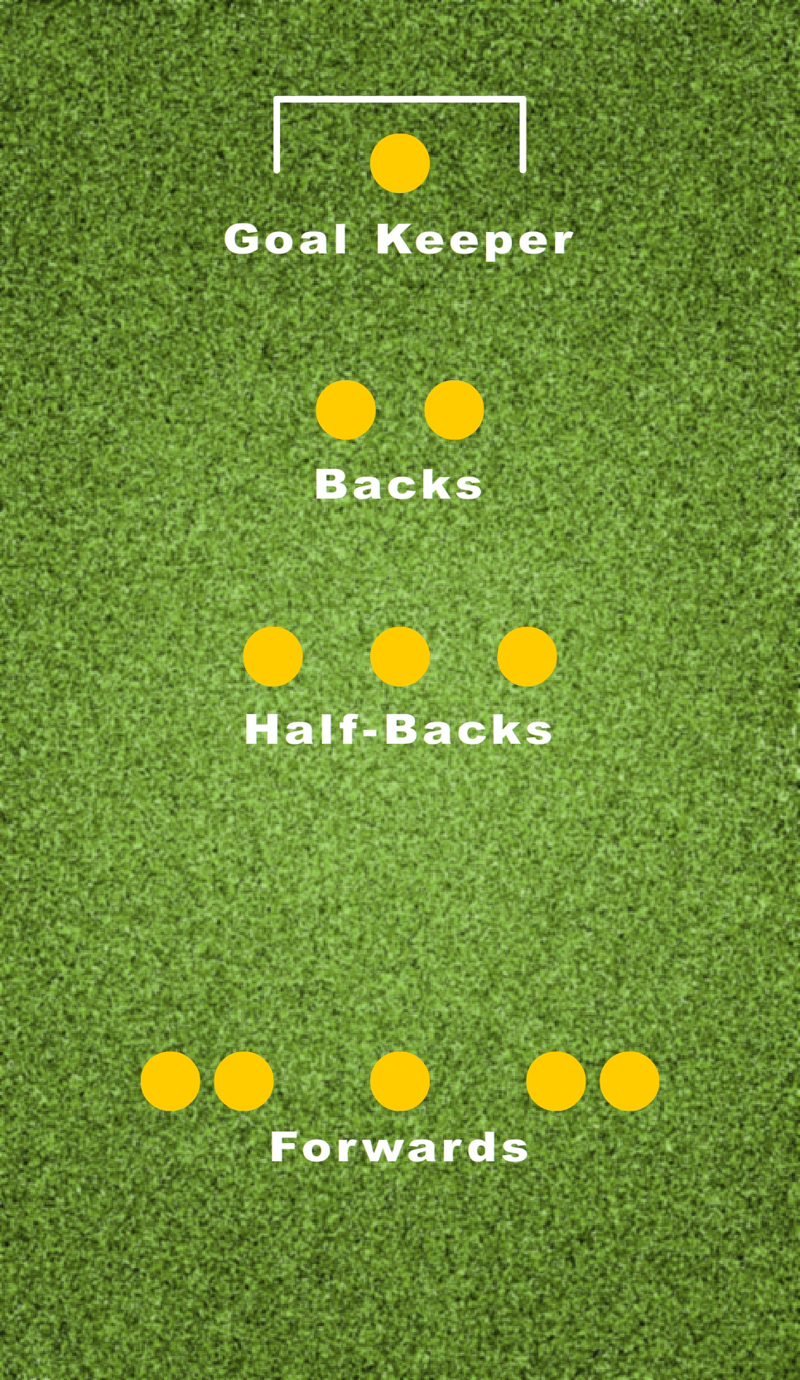CHAPTER TWO – THE BIRTH OF THE ASSOCIATION GAME IN LUTON
Page 1 – Dallow Lane
Page 2 – Map of Luton
Page 3 – 1879 Cricket fixtures
Page 4 – St. John’s College
Page 4 – Introduction to the Lomax brothers
Page 5 – Birth of the Luton Wanderers
Page 6 – The first Association football game
Page 7 – Luton Excelsior
Page 8 – The first 11 a side games
Page 9 – Luton Wanderers advertise
Page 10 – Grosvenor House College
Page 11 – George Deacon’s first game
Page 12 – Team formations
A report from the Luton Reporter of 7th June 1879 gives us a chance to be introduced to Dallow Lane.
“The fete in Dallow Lane. As a matter of course the wet weather materially interfered with the fete in Dallow Lane. Mr. Dudley, of “The Grapes” Inn, had provided a long programme of amusements, and, as soon as the gates were open, a large concourse of people, headed by the Dunstable Volunteer Band, proceeded to the filed, but the rain soon came on so heavily that the refreshment booth was speedily crowded. The majority of visitors retraced their steps to the town, although a few, determined to see all they could, remained in the open air watching the performances of the various artistes, who carried out their programme under a covered pavilion. A considerable number of persons congregated under a booth outside the “Fox “ Inn, and, considering the watery state of the weather, the song which some jovial spirit truck up, “The Anchor’s Weighed,” did not seem much out of place. At all events, it met with a hearty response. Had it been fine, the fete would undoubtedly been a success.”
It appears that a Mr Scarborough rented at least 20 acres along with Dallow Farm. One or more of the fields around Dallow Farm and Dallow Lane were therefore known as Scarborough’s Meadows. The Luton News of the early 1930’s covered T.G. Hobbs (born around 1853) recollections of his life in Luton in this period as follows;
“Scarborough’s Meadow that I knew for twenty years or more as a favourite place for school treats, is now covered by the last streets lying between Dallow-road and Ashburnham-road. Beyond the infirmary it was all open country except for a cottage in a dell nearly opposite the Infirmary. Schools taking part in combined efforts would meet upon Park-square and march to the meadow. In particular I remember the celebration of the Sunday School Centenary about 1882 when there was a massed effort to sing before forming a procession. The singing was led by a cornet and conducted by Mr George Wing. Probably 10,000 persons were present in Park-square.
Other demonstrations on a big scale used to be carried out there by United Bands of Hope”.
____________________
Page 2
Scarborough’s, and other meadows in Dallow Lane, were used to hold town events such as fairs and athletic meetings. The area where Excelsior played was bordered by the railway line to the north, Dunstable Road to the east and Dallow Lane to the south. Dallow Lane itself would probably have been a muddy lane lined by hedges and possibly ditches. The fields behind the Workhouse, now Brantwood Park (also known as the West Ward Recreation Ground and Dallow Road Recreation Ground), would probably also have been used for football and other events. The field was purchased by the Council in 1894. We also see mention in newspaper reports of Mr Deacon’s meadow in Dallow Lane.
The following is from the History of Luton by William Austin, 1928;
“In the Manor Court Rolls of 1829 mention is made of a brickfield in Dunstable Road worked by one William Gregory, who had erected some cottages on the waste there. It must be noted that seventy years ago [so 1857] the whole of the fields on the east side of Dunstable Road from Alma Street to the railway were disused brickfields. The cottages referred to were the old thatched cottages which stood on the sites of the houses now called “Brighton Terrace” and Victoria Villas.
In the same year, 1829, a well-known man, Lawrence Clark, obtained permission from the Lord of the Manor to enclose “Fox Dell,” a part of the “waste of the Manor.” Fox Dell was at the corner of Dallow Lane and Dunstable Road, opposite the Fox public-house. In this Dell Clark erected a thatched cottage which was standing till a few years ago.
The “Fox” public-house has been recently (1927) rebuilt. An annual fair used to be held in front of this inn called the “Fox Fair.”
______________________
Page 3
The Luton Reporter of 14th June 1879 gives the fixtures for Luton Town Cricket Club.
The Luton Reporter of 14th October 1879 only sets out the fixtures for the Hertfordshire Rangers. The piece asks club secretaries to submit their fixtures and reports but no fixtures of Luton Clubs are advertised for this season.
_____________________
Page 4
The 15th November 1879 Luton Reporter gives an account of a game under the heading “Football.” It is between St. John’s College and “The Woodlands, Hitchin”. The result was victory for St. John’s College by three goals and three touch-downs to nil. It was probably a rugby game in which J.C. Lomax, future Luton Town captain, played for the College.
St. John’s College (photo below) was a well respected boarding school that attracted boarders from all over the country, the Empire and other countries where ex patriots lived. The College occupied over three acres of land between Old and New Bedford Road. When it was sold in 1895 it was described as a “superior residence with three reception rooms, five bedrooms and bathroom surrounded by extensive pleasure and vegetable gardens and grounds; the college buildings comprise large school rooms, lavatories, 14 bedrooms for 50 pupils, recreations grounds, play shed, stables, coach houses plus lofts, cowshed and piggery”. The headmaster, Henry Wright, intended St. John’s College “to be for the sons of the gentry and the professional class; those engaged in industry and trade need not apply. It was a distinction he found difficult to maintain” – From “A history of education in Luton” by John G. Dony.
We know from the youngest Lomax brother, D.A.N. Lomax’s obituary, that he was at the College for ten years before joining the army in 1888. It would therefore be reasonable to assume that all three Lomax brothers went to the College in about 1878. John Charles Lomax would have been 14, Ernest Herbert Lomax 12 and David Alexander Lomax Napier Lomax 10 years old when they came to Luton. Their father, John Lomax senior, was a wealthy man, it appears from owning a Cotton Mill in Bury Lancashire. In 1871 they were all living at “Springfield House”, Bury (pictured below on the far right).
The family had four servants including one nurse. John senior is described in the census as a retired cotton spinner. It appears he made his fortune by getting ahead of the competition by buying mechanical spinning machines. The clever part was then getting out of the business as slumps in the cotton industry were regular and very destructive to workers and bosses alike when they hit. He moved to Grosvenor Square – an affluent part of London. The boys were sent to St. John’s College.
______________________
Page 5
The next reported football match in Luton was played on Saturday 10th January 1880. The Luton Reporter says;
“the return match between the Christ Church and Luton Youths’ Football Clubs was played in the meadow adjoining Dallow-lane. The match resulted in a “tie”. The play was good on both sides, but the bad state of the weather and the field somewhat detracted from the pleasure which the game would otherwise have afforded”.
We do not know for sure that this was a football rather than a rugby game but it in my view it should be counted as a probable. You will note that it says it is a return match which means the first game was not reported in the newspaper. The term “Luton Youths’ Football Clubs” may mean that it is a representative team of all the youth teams in the town.
Interlude – From the Luton Reporter 8th May 1880. “The Coffee Tavern movement has extended to Luton. This (Friday) evening, the “Pride of the Lea” Coffee Palace, which is next door to the Town Hall, will be opened. Admission is free, and as His Worship the Mayor, Canon Harrison and other gentlemen have promised to be present, there should be a large attendance”.
It is at this point that we are introduced to one of the two clubs that we are all familiar with. Luton Wanderers were formed in September 1880 at a meeting at the Cricketers Arms Beerhouse at 63 High Town Road (pictured today below).
The Luton News of the 25th February 1926 reports as follows;
“The Wanderers’ Club was formed in September, 1880, at a meeting held at the “Cricketer’s Arms,” High Town-road. Its members were all working men, and paid a shilling entrance fee, and a subscription of twopence per week for the season. The first secretary was Mr J.H. Bennett, happily still with us, though he has passed the allotted span. Mr H.G. Spratley was the assistant secretary, and the affairs of the club were managed by a committee of five. The first playing members were T. Brooks, George Deacon, Albert Deacon, B. Barrett, J. Odell, George Smith, T. Veal, G. Abbott, W.H. Wheeler, Geo. Bennett, G. Clark and R. Ellingham. Messrs Odell, Wheeler and Veal have passed away, but the others, and several members of the Club, still survive.”
The fact that the club was formed in September, at the end of the cricket season suggests that the founders were cricketers who wanted a game during the winter months. The Town Cricket Club had their ground in People’s Park – what today is called Bell’s Close. The Luton Wanderers do not have a game reported in the newspapers until December 1881 against Excelsior. There are some major names mentioned in that newspaper report especially George Deacon and Herbert George Spratley. The latter had a major impact on football in the town but he is largely unknown today.
_______________________
Page 6
The first confirmed Association Football match was played on Saturday October 23rd 1880. The Luton Reporter gives the story “A football match (Association Rules) was played in the Dallow-lane meadow on Saturday 23rd, between the 15 of the Luton “Excelsior” Football Club and 15 of the Luton “Rovers” Football Club resulting in a victory for the “Excelsior” Club by two goals to nil. The following players took part on the game:
“Excelsior” – Goal, H. Squires (captain); Backs G. Hinson and E. Browning: Half Backs, W. Smith and W. Tearle; Forwards, T. Lawrence, W. Eling, W. East, A. Hudson, E. Ellingham, M. Hinson, J. Stanbridge, C. Squires, W. Hunter and H. Wilkinson.
“Rovers” – Goal, L. Austin; Backs, Pearman and Pedder; half backs, Plummer and Hunt; Forwards, T. Small (captain), O. Small, Walsh, A. Trott, H. Southam, B. Cotchin, J. Boutwood, H. Booth, L. Hart and W. Hurdley”.
Some of these players will make a major contribution to football in the town and some will play for Luton Town. Note that there were only the two backs, two half backs and ten forwards for each team yet there were only two goals.
It is strange that it was a 15 a-side game under Association Rules. Since the 1863 the Football Association rules set out that teams should be 11 a-side. Again, it may be that they liked some of the rules that had been introduced but not others. The independent minded footballers in Luton may have developed a game that they liked and decided to play it using their own rules. However, the lads would have realised that while they could play their own rules against like minded Lutonians, it did not help when they wanted to play opponents from outside the town. Luton was a long way behind much of the country in football development. The town would, however, make tremendous strides in a very short time period.
____________________
Page 7
Excelsior has always been called a “works” team. However, I came across a report of the Golden Wedding anniversary of Walter Smith in the Luton News of 6th August 1936. The paper interviewed Walter and the report is as follows;
“Mr Smith’s connection with football in Luton dates back nearly sixty years. As a young man, he was a keen player, and about fifty-seven years ago [1879] he joined other enthusiasts in forming the Excelsior Club, and served on the committee. Local football was only just beginning. When the Excelsiors was formed the only other club in existence was the Christ Church Institute, and the Rovers came into being shortly afterwards.
The Excelsiors’ early games were played on the meadow which is now Messrs Henry Brown and Sons’ timber yard. Their first meetings were held in the blockhouse of a Wellington-street firm.”
I had doubted the “works” team tag as the professions of the known players were varied. They were Drapers, Straw Warehousemen, Blockers, Tailors and a sewing machine engineer. Their ages varied from 16 up to 25 with 21 years the rough average age. It may be that because they met on the premises of a firm they were given the “works” team tag. A blockhouse was the room where the blocking of hats took place. This would have been within a factory or in a separate building out back. The name Excelsior is quite a common one in football at the time, Birmingham Excelsior, Chatham Excelsior and London Excelsior for example. When and where they were formed is a mystery at this time. Hopefully some material will be revealed.
Rovers were a High Town team and played in People’s Park. It appears that they would sometimes call themselves Luton Rovers and sometimes Park Rovers.
The return match between Rovers and Excelsior was played on 6th November, again 15 a-side and at Dallow Lane. After a well contested game it was the Rovers who were victorious by one goal to nil. The teams were similar to the first game with two exceptions – A. Spratley and G. Hunt played for the Rovers. The Excelsior forward T. Lawrence played in goal in this return match. He would play for Luton Town at half back five years later. Teams; “Excelsior, Goal – T. Lawrence. Backs – E. Browning and W. Smith. Half backs – G. Hinson and C. Squires. Forwards – H. Squires (captain), W. East, W. Ealing, J. Clarke, A. Spratley, W. Tearle, J. Stanbridge,, A. Hudson, E. Ellingham, A. Booth.
Rovers, Goal – F. Plummer. Backs – T. Pedder and V. Pearman. Half backs – Hodgkinson and G. Hunt. Forwards – T. Small (captain), E. Walsh, W. Boutwood, O. Booth, W. Chennets, C. Brown, E. Nott and A. Trott.”
Rovers were again involved in the third game, this time against Christ Church Institute which they won 1 0. It was 15 aside played in People’s Park on 13 November. The teams were;
“Rovers, Goal – S. Smith. Backs – G. Freeman and V. Pearman. Half backs – T. Hodgkinson and J. Hunt. Forwards – T. Small (captain), O. Small, E. Walsh, J. Boutwood, W. Boutwood, W. Smith, E. Nott, F. Heley, H. Cotchin and W. Bradshaw.
Christ Church Institute, Goal – A. Jacquest,. Backs – A. Cooper and J. Johnson. Half backs – F. Hoole and C. Hull. Forwards – W. Jennings (Captain), F. Higgins, H. Fullarton, J. Scott, C. Beeves, H. Shackleton, J. Gates, W. Brook, F. Smart and S. Plummer.”
On 20th November 1880 we are introduced to E.H. Lomax, who along with J.C. Lomax, were playing for St. John’s College against Rovers and both played as one of the ten forwards in this 15 a-side game. It ended 0 0 – with 20 forwards on the pitch it seems unreal that these games were so low scoring. Teams were;
“St. John’s College – Goal – B. Browning. Backs – J. Hind and H. Tidswell. Half backs – E. Dowding and R. Thomson. Forwards – A. Sharp, A. Kent, W. Tidswell, J.C. Lomax, E.H. Lomax, H. Kershaw, E. Betteley, E. Higgs, H. Yeo and L.E. Eland.
Rovers team was, Goal – W.B. Chennels. Backs – T. Pedder and Sharp. Half backs – G. Hunt and V. Pearman. Forwards – T. Small (captain), O. Small, J. Boutwood, L. Hart, E. Walsh, W. Smith, W. Hurdley, H. Southam, W. Samwells and E. J.” [name missed off the report].
____________________
Page 8
The first reported 11 a-side game in Luton took place on 27th November 1880 between Christ Church Choristers and Star. That is a fact you can role out next time there is an uncomfortable silence at the Mother-in- laws. It took place “in Mr Scarborough’s Meadow, Dallow Lane resulting in a hard-gotten victory of three goals to none for the former.
Christ Church Choristers, Goal – T. Whitehead. Backs – W. Slough and W. Hopewell. Half backs – W. Morrison and A. Coker. Forwards – E. Smith (captain), W. Brown, F. Kilby, A. Shepherd, W. Billinham and E. Jaqurst.
Star, Goal – T. Hurdley. Backs – Edward Brown and H. Benden. Half backs – C. Maffey and H. Smart. Forwards – W. Hurdley (captain), W. Otway, J. Otway, E. Rosson,, W. Burrows and T. Keen”.
This is the first mention of Scarborough’s Meadow in any reports. There is a painting of the farm at Wardown Park Museum and it is viewable online.
The teams both lined up with a goal keeper, two backs, two half backs and six forwards. The Choristers ran out 3 0 winners. It is at this stage that I have to point out a snag in the research. Match reports were completed by the club secretary and submitted to the Newspapers who use printing blocks to print the paper. Bad handwriting and misspelt names and initials seems a fairly regular occurrence. Tracking some of the players has proved tricky and because of this educated guesses have to be made. I will point these out as we go along. This is something we will see time and again. We have to remember that there were no contracts at this time. If you loved playing football and were asked to turn out for a mates team then it seemed it was left to your conscience. If you did play for another team then there might be some friction with your team mates but it was open to them to do the same. Also it may be that players turned out for their works teams, such as Engineers and for a another team.
Excelsior were again Rovers opponents on 4th December at People’s Park. This 15 a-side game “was very fast and closely contested” and ended goalless.
The second 11 a-side game meanwhile occurred on 11 December at Dallow Lane. The Luton Reporter; “Star v Christ Church Choristers. This match was played on Saturday last at Dallow-lane (Association Rules) resulting in an easy victory for the latter club. Score – four goals to one.
Star, Goal – W. Burrows. Backs – P. Bendon and B. Hurdley. Half back – H. Anstee. Forwards – W. Hurdley (captain), W. Otway, E. Rosson, C. Maffey, W. Crew, E. Gilder, and H. Crew.
Christ Church Choristers, Goal – P. Whitehead. Backs – W. H. Slough and W. Morrison. Half back – E. Tydeman. Forwards – E. Smith (captain), W. Brown, F. Kilby, A. Shepherd, E. Finch-Smith and W. Hopewell”. Only ten players listed for Christ Church Choristers and only one half back for each team.
The same weekend Excelsior played against Newport Pagnell “A match between the fifteens of the above clubs, was played on Saturday last, December 11th, at Dallow-lane, resulting in a victory for the strangers by three goals to nil. Excelsior Club – Goal – H. Squires; Backs – A. Spratley and W. Smith. Half backs – G. Hinson and A. Hudson. Forwards – T. Lawrence (captain), H. Boxford, J. Clark, W. East, W. Ealing, H. Abrahams, C. Squires, J. Stanbridge, E. Ellingham and E. Browning”.
The beginning of 1881 saw Excelsior play Christ Church Institute “on the People’s Park, in the presence of a numerous body of spectators. At the close of the game, the “Excelsior” were victorious by two goals and three disputed to nil. Mr Hunter and Mr Jones amiably officiated and umpired”. It is unusual to have three disputed goals in a game. The report praises the umpires accordingly and we can only imagine the arguments that took place over the disputed goals. There were no goal nets at this time so there were arguments as to whether the ball had passed between the posts and under the bar. Offside was also an issue, as it still is today. The game continued while the umpires tried to agree on an appeal. If the umpires could not agree then the game carried on. It is unusual to see so many disputed goals but as it seems to have been a one-sided game then it mattered little.
We are introduced to a new ground in late February 1881. “On Saturday, a match took place at Richard III ground, London-road, between Luton Rovers and the Newport Pagnell Clubs, which resulted in a victory for the visitors by three goals to nothing”. I am not clear where this pitch would be. There were open spaces according to the 1880 map. It may have been where Matalan now is, which is the site of one of the two castles that existed in Luton. Or, more likely, it was in a field behind the Richard III public house.
There was an advert in March for a game “between the Hitchin Club and the Luton Rovers on Saturday next, on the Richard III ground, London-road. Play to commence at three pm. Admission 3d”. This is the first mention of an admission fee. Rovers recognised that playing in People’s Park meant that they could not charge admission as it was a vast open field accessible by all. To move a game to the Richard III ground indicates that the ground was enclosed to allow admission to be charged. This would be valuable income for a club. The only other way of raising money was through the subscription of its members. Excelsior had their ground in Dallow Lane which also appears to have been enclosed by a fence or more likely a hedge and ditch. They could therefore also charge admission. This revenue meant that they could pay their players travel expenses to away games and gain experience against other teams.
That is the last mention of football for the 1880/81 season. Cricket was played by many footballers and took over many fields in the town so the seasons never overlapped.
______________________
Page 9
The 1881/82 football season would not begin until October when “The Luton Excelsior Football Club will commence play for the season at Mr Deacon’s meadow, Dallow-lane, on Saturday, Oct 1st, play to commence at three o’clock”.
We have not come across any Wanderers games at all after their formation in September 1880. They placed an advert in the 5th November 1881 Luton Reporter; “Luton Nov, 4th 1881. The Luton Wanderers Challenge any other F.B.C. within 20 miles of Luton, either Rugby or Association, for a friendly game. All communications to be addressed to the Secretary of the above Club, No. 1, Spring Place, Luton Beds”. FBC is Foot Ball Club. Interesting that they offer football or rugby.
The first three games that Excelsior played were all 15 a side games in which they beat St. Albans 3 0, Rovers 4 0, and Bedford Volunteer Rifle Corps 1 0.
_____________________
Page 10
The Luton Reporter of 10th December 1881 introduces the second of the three private boarding schools in Luton. “Grosvenor House School v Christ Church Institute (2nd eleven). This match was played on Saturday, December 3rd 1881, in the meadow kindly lent by Mr Pigott for the occasion. The Institute won the toss, and elected to play with a strong wind in their favour. When half time as called each side had secured one goal. On ends being changed, the school quickly took the ball into their opponents ground, and passed it between the posts. The Institute, backed by vastly superior weight and strength, played pluckily, and made several most determined attempts to retrieve their loss, but fell victims to the superior skill of the boys. The school, won by two goals to one”. This appears to have been a men against boys match with the heavier team being beaten. The Institute had the heavier and stronger team but the boys won through footballing skills.
Grosvenor House School was situated at 59 Rothesay Road and John E Arnold was the head and schoolmaster. Boarders came from all over the United Kingdom, also from India and even Germany.
It appears that Mr Scarborough’s meadow in Dallow Lane was shared by a number of teams. In December, Christ Church Choristers played there against “Rothesay-road F.C., the former winning by two goals to nil”. Later we will come across Albany who also played there. We see many pitches in parks today so if the meadow was large enough it could likewise accommodate many pitches
Excelsior travelled to Newport Pagnell in mid December.
“These clubs met for the first time this season on Saturday, December 10, at Newport Pagnell. Luton won the toss and Newport kicked off. For some time the game was very even, but by some good play Newport scored the first goal. The ball again being kicked off, the Lutonians played up very vigorously and made some good runs but failed to score owing to the superior strength of their opponents. No further score was made until half time. On ends being changed Pearce (Newport captain) by some good play passed the ball to B. Garrett, who scored a goal for Newport. Thus Newport won a well contested and pleasant game by two goals to nil. For Newport, Pearce (captain), B. Garrett, Daniels and Mapley rendered good service to their side, as did also W. Smith, H. Boxford, T. Garrett and W. Eling.
Luton – Goal – T. Lawrence. Backs – H. Boxford and H. Spratley. half backs – T. Garrett and A. Deacon. Forwards – W. Eling (captain), W. Smith, E. Ellingham, A. Shackleton, G. Plummer and Dimmock”.
The report talks of the superior strength of the Newport team which indicates a physical game. We see Albert Deacon playing for the first time. Albert was born in January 1865 in Luton. In 1881 he lived with his parents at 35 Wenlock Street. Like his brother, George, and father, he was a Straw Hat blocker.
___________________
Page 11
We come across Albert Deacon’s brother, George’s first game on Boxing Day in Wanderers first reported game against Excelsior in a 15 a side game. “A match was played on Bank Holiday, Dec 26, in Mr Deacon’s meadow, “dallow-lane” between 15 of the “Excelsior” and 15 of the “Wanderers” and resulted in a victory for the “Excelsior” by five goals to nil. Players – “Excelsior” Goal – W. Tearle. backs – T. Allen and W. East. Half backs – G. Hunt and H. Spratley. Forwards – H. Boxford (captain), W. Smith, C. Squires, H. Wilkinson, E. Ellingham, T. Lawrence, M. Hinson, W. Eling, J. Stanbridge and A, Hudson.
“Wanderers” Goal – G. Allen. Backs – O. Worboys and G. Long (captain). Half backs – W. Garrett and G. Smith. Forwards – J. Odell, G. Deacon, A. Deacon, T. Raleigh, G. Worboys, D. Abbott, R. Ellingham, R. Bennett, A. Durrant and T. Brooks. Umpires, Messrs Godfray and Irons”. Albert Deacon plays for Wanderers two weeks after playing for Excelsior. This emphasises the park football nature of the game where players seemed to have turned out for their mates teams at short notice.
We also see in this game many future Luton Town players, Long, Hunt, Spratley, the Ellingham’s, Brooks besides the Deacon brothers,
Interlude – Christmas at the workhouse. The inmates plates were “piled high with roast beef and vegetables, and afterward with excellent plum pudding. Ale, snuff and tobacco were also distributed”.
Wanderers and Excelsior second teams played on the 30th December 1881. “An exciting game was played between the above clubs, on the People’s Park, on 30 Dec; the Wanderers playing remarkably well, scoring a goal with a few minutes of the start, and after some good play on both sides, the Wanderers retired the victors by one goal to love. Teams: Wanderers, J. Bennett, goal; T. Veal and D. Davis, backs; G. Woodbridge and G. Bennett, half-backs; T. Brooks (captain), H.G. Spratley, G. Smith, G. Abbott, G. Worboys,and J. Buswell, forwards. Excelsior: T. Brown (captain) goal; J.G. Hunt and T. Lawrence, backs; W. Tearle and A. Lomax, half-backs; J. Scott, H.A. Fullarton, T. Small, C. Lomax, R. Fisher and H. Lawrence, forwards. Umpires, J. Odell and H. Ellingham.” The two eldest Lomax brothers make their debut for Excelsior reserves having only previously played for their school.
1881 ended with Excelsior the number one team with Rovers the second some way behind. Excelsior began the year 1882 with a victory over Christ Church Institute, a draw with Hitchin and a victory in a 15 a side game over Bedford Volunteer Rifle Corps.
______________________
Page 12
1882
At the end of February Excelsior lost a 12 a side game against Chesham two nil. The line up’s are interesting for this game.
“Excelsior, Goal – T. Brown. Backs – V. Pearman and T. Allen. Half backs – W. Tearle and T. Lawrence (captain). Forwards – H. Boxford, W. Smith, E. Ellingham, W. Eling, A. Worrall, C. Squires and A. Booth.
Chesham :- Goal – A. Hobbs. backs – T. Read and G. Payne. Half backs – J. Barnes, F. Hill and J. Hill. Forwards – A. Woods (captain), T. Read, W. Coughtery, S. Avis, C. Holt and B. Thorne”. This is the first time that we see three half backs being played. With 12 players allowed, Chesham decided to use the extra player at half-back instead of having 7 forwards. Excelsior played with just two and had an extra forward instead. Cambridge University and Blackburn Olympic have been credited in many circles with being the first to use three half backs with the former club first using the formation in 1883. However, here we are in February 1882 with Chesham using the 2-3-5 formation, plus 1.
Early March saw Wanderers second reported game again against Excelsior. It was a 15 a side game played on Wanderers home ground of People’s Park and “resulted in an easy victory for the Excelsior by two goals to nil. G. Hunt, T. Brown, and H. Boxford rendered good service for their side, as did G. Long and T. Brooks for the Wanderers. Players: Excelsior Goal – T. Brown. Backs – G. Hunt and W. East. Half backs – W. Tearle, T. Lawrence and H. Abrahams. Forwards – H. Boxford (captain), W. Smith, W. Eling, E. Ellingham, C. Squires, J. Sandridge, A. Worrall, A. Hudson and A. Shackleton.
Wanderers goal – J. Odell. backs – O. Worboys and D. Davis. Half backs – W. Barrett and J. Raleigh. Forwards – G. Long (captain), T. Brooks, G. Deacon, A. Deacon, W. Garrett,, R. Ellingham, G. Abbott, A. Martin, W. Davis and F. Brown”.
Luton Town’s first ever team team would consist of seven of these players – Hunt and Lawrence of Excelsior plus the Deacon brothers, Brooks, Barrett and Martin of the Wanderers
Having touched on formations it is worth considering in a little more detail. The formation change from 2-2-6 to 2-3-5 was mainly due to the change from the dribbling game to the passing game. The Scotland international team used the passing game and regularly beat the English who preferred the dribbling game. This was not lost on the English footballers and the change to passing, or what was known as the “combination game,” was gradually made. We will see the combination game mentioned time and again in respect of Luton Town.
The logic of converting one forward to half-back was simple. The extra half back was available in midfield to assist in the passing game. In addition, the more players a team had defending, the better the chance of gaining possession of the ball by tackling the opponents or intercepting a pass. There was a move in the game towards players keeping to their positions on the pitch and not wandering all over. We have seen games with 20 forwards on the pitch end up 0 0. It may be that the maxim “less is more” was put into practice. A very crowded goal mouth rarely leaves room for a decent shot let alone a goal and is poor entertainment for the supporters. The pitch also suffers if there is an extended melee in the goal mouth. The two sets of wingers playing the passing game on the grassy wings would be a major factor in future games.
That concludes the 1881/82 season. The lack of reported games in the second half of the season may have been down to bad weather. Or it could be that the club secretaries did not submit match reports to the newspapers. More likely it is due to a lack of interest by the newspapers. Football was very low down the pecking order and ignored if there was any sort of political news.
